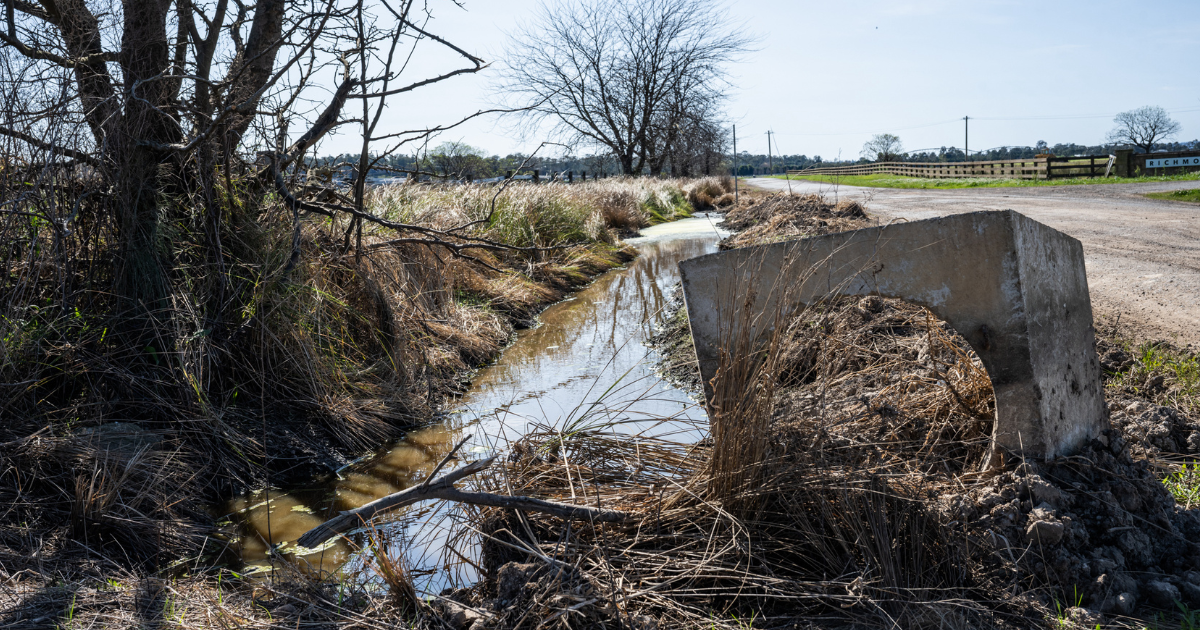Hawkesbury Post contacted all...


Hawkesbury Post contacted all...

In a heartwarming recognition of community...

After more than two decades of dedicated service, the...
More than two years after Hawkesbury City Council hired a consultant to investigate the drainage system in Richmond Lowlands, no final report has been published, and no repair work has started. The damaged and unmaintained infrastructure continues to worsen flood damage in the area.
Documents obtained by the Hawkesbury Post through a GIPA ( formerly known as Freedom of Information) suggest that resolving the drainage issue might take a long time, or may not happen at all. The draft report dated 3 January 2024 indicates that much of the landscape has changed irreversibly.
“It is possible that some of the changes to the landscape cannot practically be reversed or mitigated, and so the impacts that have been sustained following the recent floods will continue after every flood,” the draft report concluded.
In 2022, Hawkesbury City Council engaged consultancy firm Molino Stewart to assess the drainage system across various properties. The goal was to create a plan for each property that the Council would approve, specifying heights and other critical information to guide necessary works.
The drainage system is crucial for safely and quickly removing floodwater. Its failure in recent years has cost local farmers, including turf farmers, tens of millions of dollars. The prolonged wet weather in 2022, following two floods, exacerbated the situation, leaving many areas slow to dry out, especially those with large catchments contributing runoff to low-lying areas.
The report attributes the drainage issues to two main factors: the failure of landowners or the Council to maintain flood mitigation and drainage infrastructure, and on-farm practices that have altered the topography or drainage pathways.
“Both of these sets of contributors include actions or inactions which have taken decades to incrementally create the current situation. This includes the gradual deterioration of infrastructure or the lowering or raising of paddocks, principally through turf farming,” the draft report states.

The report also highlights that some changes in agricultural practices might help prevent future drainage problems. It includes a summary of recommended actions, specifying who should carry them out, environmental constraints, and required approvals. In some cases, responsibility for actions is unclear and may need negotiation between landowners and the Council.
The report also noted that “design drawings and documentation for Council-owned drainage infrastructure were requested from Council, but it was not able to produce any.”
Another critical issue was the steepness of the river and creek banks. It found that flooding saturates the soils, and as the river level drops, groundwater levels decrease more slowly, causing a buildup of water pressure within the soils. This pressure reduces the shear strength of the sediment, potentially leading to bank collapses.
The soil composition near the river, which includes more sand and silt than clay, further reduces cohesiveness, making the banks prone to slumping as the water level drops. In areas where bank collapses have been observed, the creek is deep, penetrating through the natural levee along the river.
“The banks are steep because it appears that as the land use has moved from grazing to food crop production in the 1970s and more recently turf farming, efforts have been made to flatten and expand the fields at the expense of flatter creek banks,” the draft report said.
Possible solutions include removing sediment deposited in the drainage channel by bank collapses to improve water flow and accelerate soil desaturation. However, latent choke points upstream could limit the effectiveness of these improvements.
The draft report said a longer-term solution could involve regrading the banks to a more stable profile, possibly with a geotechnical design. This might include benching the banks or grading them to a gentler slope. While this solution would have high upfront costs, it would require limited ongoing maintenance. Indirect costs would include short-term disturbance to farmland and the long-term loss of some agricultural land.